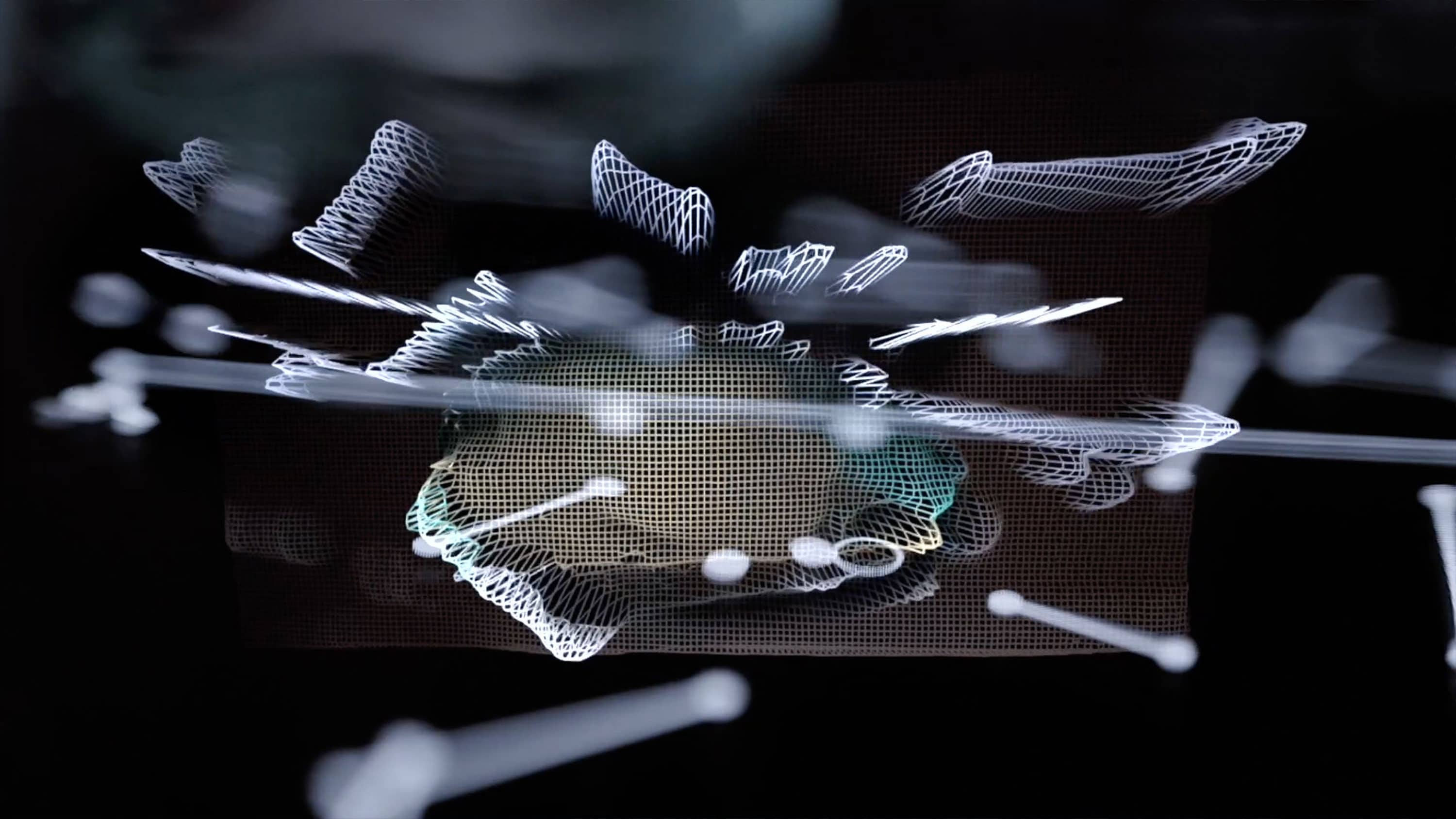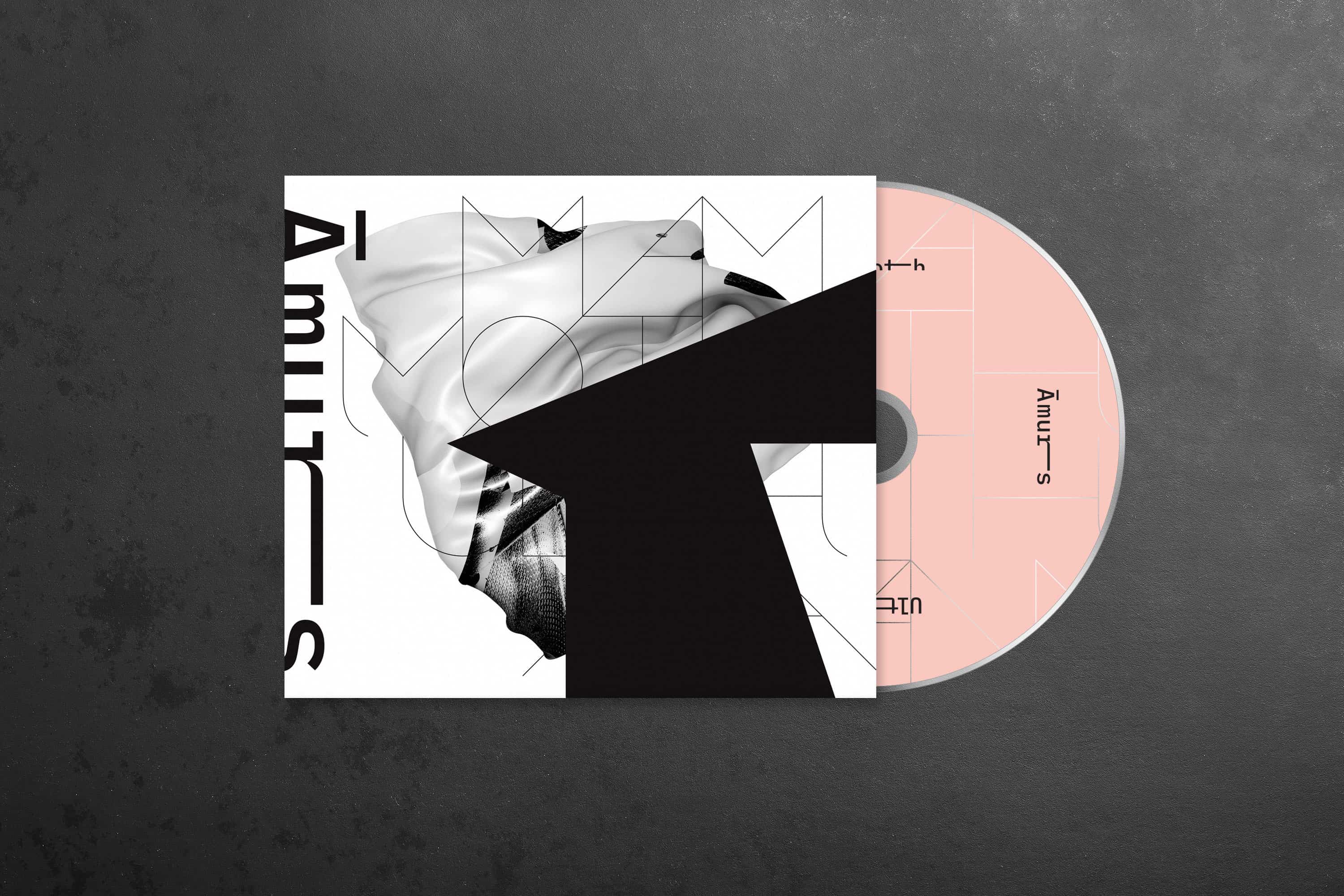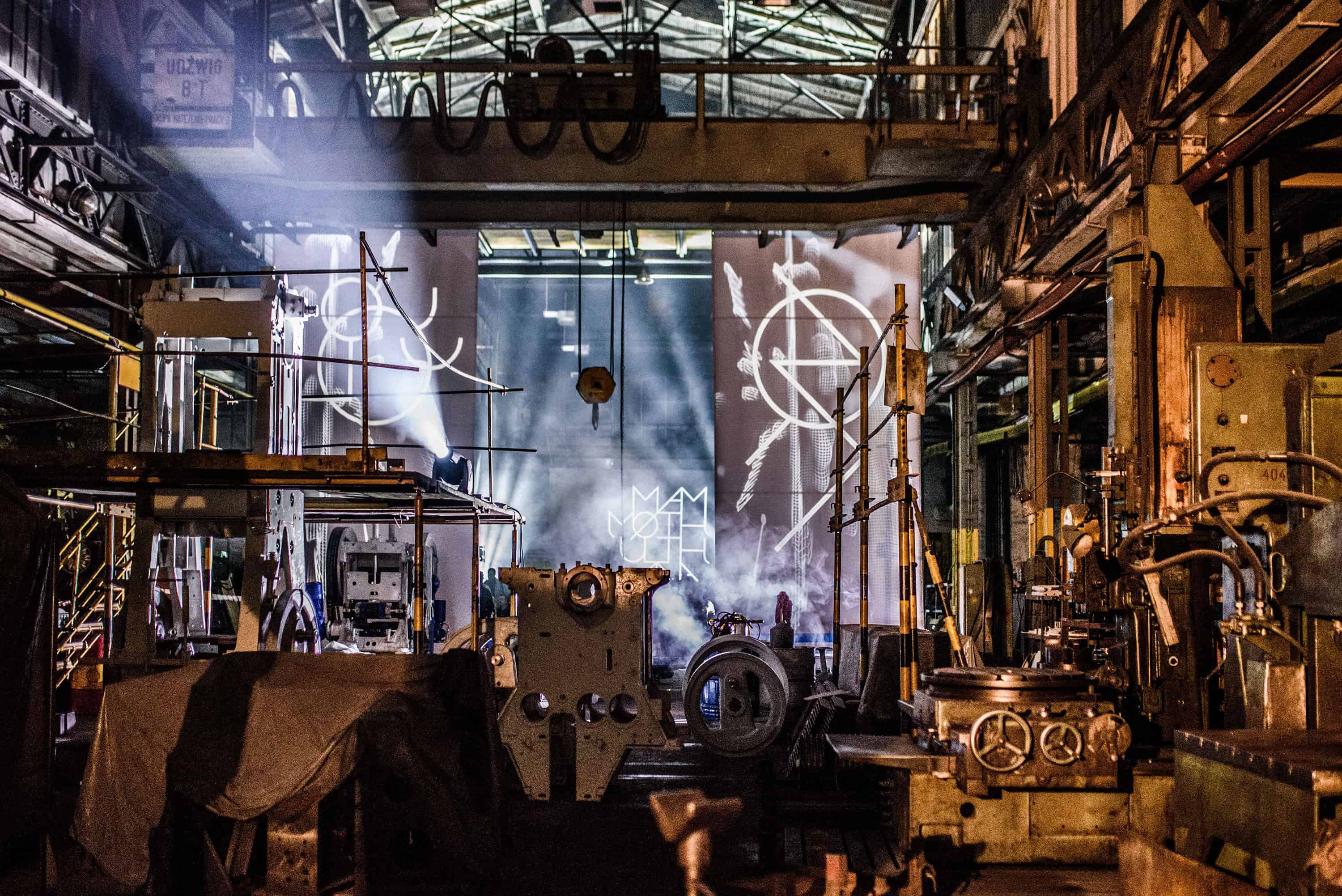Āmurs is the title of a third studio album recorded by Jacek Doroszenko and Rafał Kołacki – the artistic duo known as Mammoth Ulthana. The release is a part of the larger audiovisual project comprising three elements in total: sound installations presented in the form of an art exhibit, audiovisual performance and music album. The entire project, inspired by the industrial landscape of Bydgoszcz in northern Poland, premiered during the grand finale of this year’s Tehofest Festival.
This particular project is also linked closely to the latest issue of Contemporary Lynx magazine. Our mission is to collaborate with the most interesting Polish contemporary artists. By forging such partnerships, we aim to elevate the status of every magazine copy into a unique object or work of art in itself. For the latest issue, every reader who orders a subscription will get a free copy of Āmurs. It’s the only way to get the album – so be quick to order your subscription.
On this occasion, we sat down with both artists and Piotr Drozdowski, a producer, to have a conversation about their sound project.
Āmurs – CD album by Mammoth Ulthana, Jacek Doroszenko and Rafał Kołacki, press materials
Āmurs – CD album by Mammoth Ulthana, Jacek Doroszenko and Rafał Kołacki, press materials
Anna Dziuba: How did you come up with this idea? Is Āmurs a stand-alone piece or a single component of a larger art series?
Rafał Kołacki: Since Jacek and I decided to form Mammoth Ulthana together, we’ve released already two well-received studio albums and engaged in a number of art projects overseen by various institutions of culture. Luckily for us, we were approached by MCK (Municipal Cultural Centre) in Bydgoszcz about a brand-new composition we’d perform during the festival celebrating the industrial sites of the city. Jacek and I are both artists who enjoy working across different media. Every day, we create something new, so it was quite natural for us to explore and draw fresh inspiration from this particular context.
Jacek Doroszenko: After we agreed to get involved in the project, Rafał and I discussed the industrial legacy of Bydgoszcz. We considered using the FOD manufacturing complex as a starting point as well as the location for our live performance. That’s how we landed on the direction the project would follow. The concept for a sound installation transmitting the conversations between factory workers from Bydgoszcz occurred to us when we conducted a preliminary survey of the area. The whole event would culminate in our audiovisual performance produced specifically for the space of a factory. The Industrial Revolution has spawned some of the most profound socio-cultural transformations, including urbanisation, dismissal of an individual, renounced craftsmanship and upended social structure – we intended to bring prominence to the human factor of manufacturing.
Piotr Drozdowski: Āmurs premiered in the CNC machine factory as part of this year’s edition of Tehofest Festival organised by the Municipal Cultural Centre in Bydgoszcz. The festival’s formula is based on unveiling site-specific art projects designed for the industrial spaces of the production facilities which still operate around the city. It’s unprecedented how the festival instils “culture” into these historic industrial sites that remain largely inaccessible to ordinary people. First and foremost, these events are meant to breathe new life into the monuments of industrialism around Bydgoszcz, strive to capture the majestic nature of manufacturing and highlight people’s contribution to the production process. Cultural events hosted by factories make us realise that progress and innovation are predicated upon the symbiotic relationship between machines and humans. The festival urges its audience to raise questions so that one’s humanity wouldn’t fall prey to technological development.
Āmurs audio-visual performance, FOD in Bydgoszcz, photo by Darek Gackowski
Āmurs audio-visual performance, FOD in Bydgoszcz, photo by Darek Gackowski
AD: The release is a part of the larger audiovisual project comprising three elements in total: sound installations presented in the form of an art exhibit, audiovisual performance and music album. Could you elaborate on the individual pieces?
JK: There’s a certain correlation and interaction between the seemingly separate components, which the audience members who attended our performance had a chance to experience. Nevertheless, the project’s design allows each module to fully function on its own accord, with no discernible loss in a multifaceted quality or resonance. We’re thrilled that we were able to produce this album, even though the form of a CD record might’ve already been rendered obscure. Still, we can’t help it but feel a little bit nostalgic about the form of a tangible music record – it’s a type of archive you can always revisit.
RK: I personally conducted the interviews with factory workers from Bydgoszcz. My main objective was to delve deep into the personal and professional life stories of those who toil away in various facilities situated along the industrial trail in Bydgoszcz. My questions focused on the private lives of the life-long employees, some of whom met their future husbands and wives at work. The factory anchors their entire existence. These simple stories I’ve gathered formed a captivating, subjective and sometimes touching narrative about one’s working and actual life.

Āmurs – CD album by Mammoth Ulthana – Jacek Doroszenko and Rafał Kołacki, press materials
AD: Which aspect of audiovisual performance’s production do you find most challenging? Are there any perennial problems you must overcome?
RK: Several. Off the top of my head, I could name logistics, the need to trust your team and common technical difficulties. In my opinion, it’s always the human factor that stirs things up. As I’ve mentioned before, I had to interview ten different people for the project – the result of such an endeavour is impossible to predict. Needless to say, the stories you hear shed new light on your initial concept. What do you do? You go back to the basics, redefine and reevaluate, adjust the course according to the discoveries you’ve just made.
JD: The greatest challenge for me is conjuring an effective strategy that would entice the audience to embrace a much more demanding high-brow piece of audiovisual art. We produce sounds deviating from the common understanding of the language of music. Separate auditory phenomena are usually assembled and organised in music composition. If they occurred separately, we’d find them cacophonic. In our projects, we encourage people to identify certain sound patterns from the peripheral noise. In other words, they’re supposed to “listen” and not just “hear” things. Listening suggests paying attention to sounds; we expect our audience to listen carefully.

Āmurs – video for the performance by Jacek Doroszenko
AD: Can audiovisual projects be “exhibited” on multiple occasions? Is it possible to recreate the performance or is it always a unique, inherently transient experience?
RK: Āmurs is a perfect example of one of those audiovisual projects that are presented in their full glory one time only. However, we could definitely perform the score separately, for instance during a music festival.
JD: Our music is tailored to the demands of a venue it reverberates though. The improvised elements are contingent upon, to some extent, a cubic volume or acoustics of the production space. We’d gladly play our music in another factory or some revitalised post-industrial space to hear how the sound evolves.
AD: Thank you for the conversation.
For more information about the project, go to www.mammoth-ulthana.eu
Jacek Doroszenko, audiovisual artist, photo by Magdalena Typiak
Rafał Kołacki, sound artist and curator, photo by Darek Gackowski















